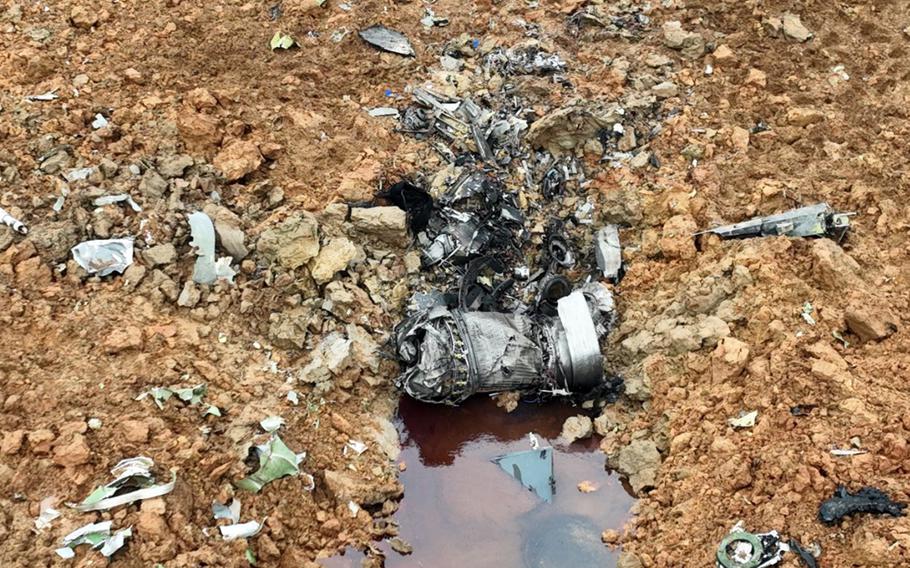
Surveillance footage shows an F-16C Fighting Falcon just before it crashed near Osan Air Base, South Korea, May 6, 2023. (U.S. Air Force)
SEOUL, South Korea — A crash that resulted in the total loss of a $30 million fighter jet last year was caused by a power loss and adverse weather conditions, according to an Air Force report released Friday.
The F-16C Fighting Falcon, assigned to the 80th Fighter Squadron at Kunsan Air Base, took off at 9:27 a.m. May 6, 2023, for routine training with three other aircraft, said the report from the service’s Accident Investigation Board.
Kunsan, about 115 miles south of Seoul on the Yellow Sea, is home to the 8th Fighter Wing and roughly 40 F-16s that make up most of the 7th Air Force’s fleet.
The horizon at the time was obscured by clouds from 1,400 feet to 17,000 feet, the report said. The unidentified pilot was flying through the clouds 11 seconds after takeoff when he experienced a partial electrical power loss that resulted in inaccurate measurements from his flight and navigation instruments.
The readings caused the pilot to become “spatially disoriented” and “unable to tell where the horizon was located,” according to the report. As a result, the pilot unintentionally flew at a low altitude.
“The [pilot] fought through several human factors while attempting to maintain aircraft control and determine which instruments were providing accurate information,” the report said.
After two minutes and 41 seconds of flight and at 710 feet above ground, the pilot ejected from the aircraft, the report said. It landed in a farm field eight miles south of Osan Air Base, home of 7th Air Force and the 51st Fighter Wing.
The pilot suffered minor injuries, the wing said in a news release at the time. He had roughly 125 flying hours on the F-16 and 425 total flying hours, the accident report said.

Debris from an F-16C Fighting Falcon that crashed into a farm field near Osan Air base, South Korea, May 6, 2023. (U.S. Air Force)
Aircraft debris flew about 900 feet from the impact zone, according to the report. No other injuries were reported.
The combination of power loss and weather conditions were the sole culprits in the accident and “the absence of either factor may have prevented this mishap,” the investigation board said. It also determined that the aircraft was properly maintained by qualified crew members.
Investigators were unable to determine what caused the power loss due to a lack of evidence after the crash.
Two more F-16s crashed in and around South Korea since December. Both went down in the Yellow Sea, the first on Dec. 11 and the second on Jan. 31. The pilots suffered minor injuries.
On Feb. 22, an F-16 assigned to the 8th Fighter Wing jettisoned two external fuel tanks over the Yellow Sea during an inflight emergency.